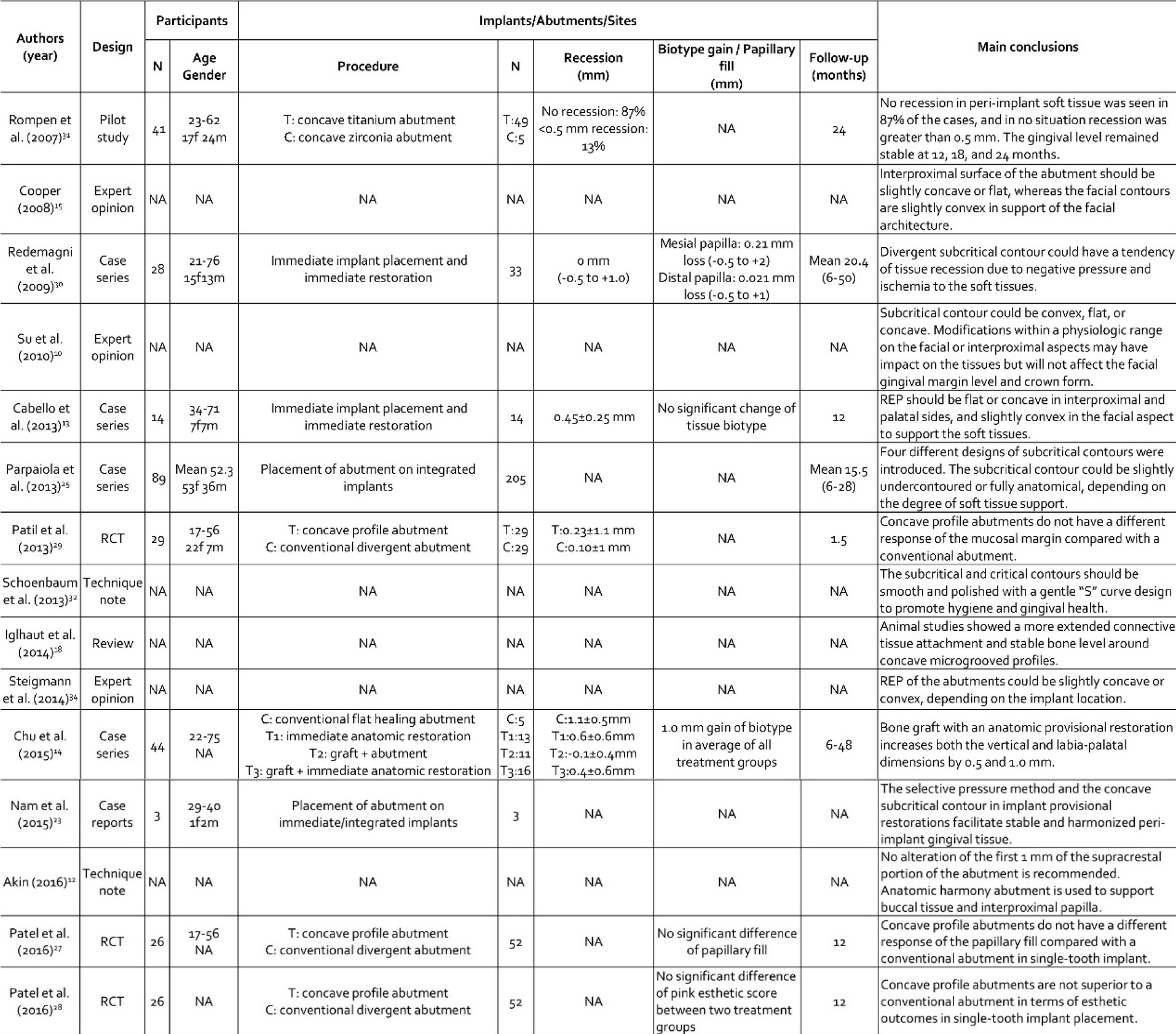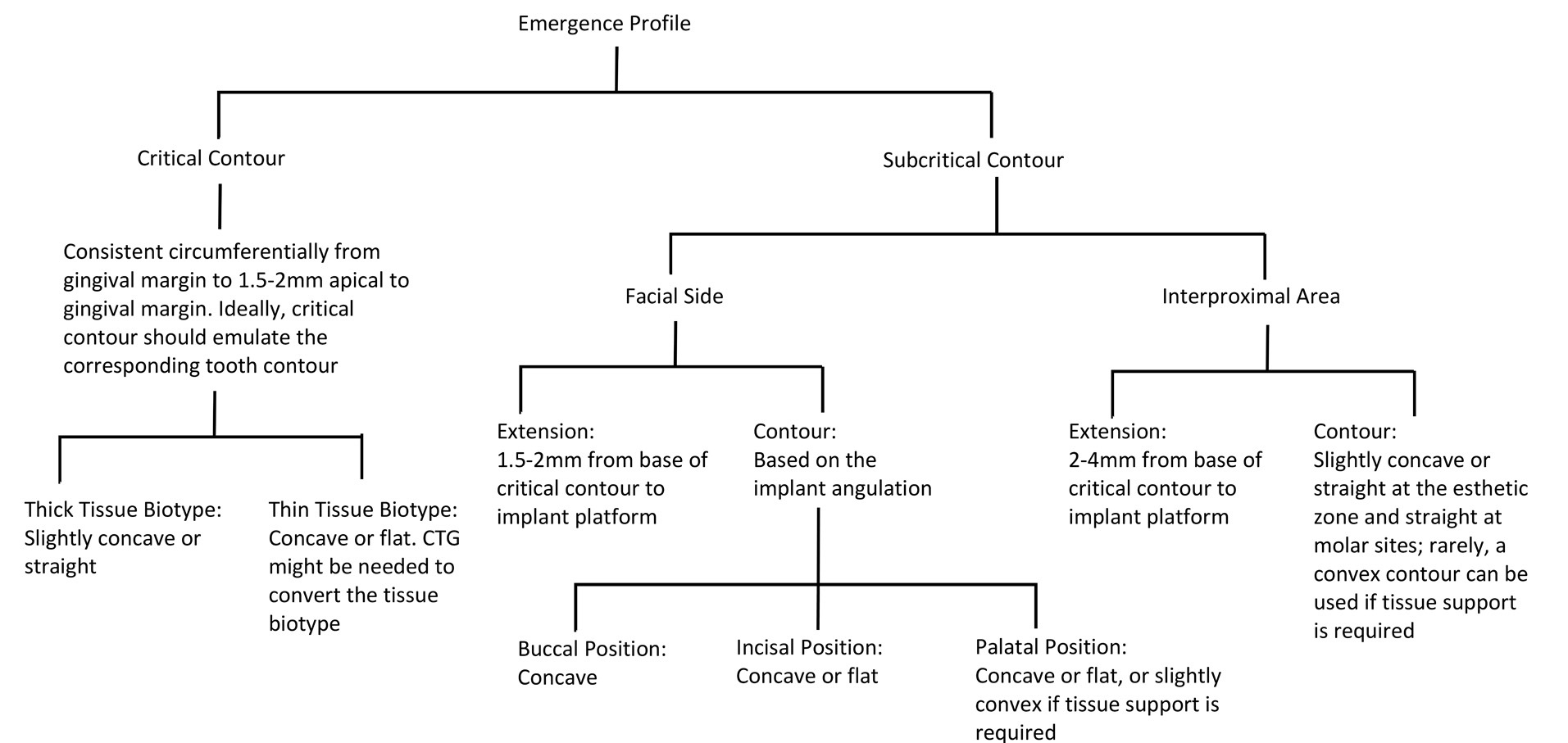IADR Abstract Archives
Critical and Subcritical Emergence Profile for Single Implants: A Review
Objectives: The aim of this article is to systematically review the currently available evidence related to the design of critical and subcritical contours of the implant emergence profile, and to further provide recommendations for clinical practice.
Methods: An electronic seach up to March 2017 was performed in 4 different databases including MEDLINE (PubMed), EMBASE, Web of Science, and Cochrane Central Register of Controlled Trials. Articles were included if the following criteria were met: published clinical evidence with recommendations on critical and subcritical contours of the single implant emergence profile.
Results: Fifteen articles fulfilled the inclusion criteria were examined (Figure 1). Meta-analysis of the included studied showed there was no statistically significant difference between concave/anatomic suprastructure and with a straight abutment when the mid-facial implant soft tissue recession was assessed (Figure 2). However, when the designs of the critical and subcritical contours were considered, two studies recommended a slightly convex contour at the facial side. One study suggested the use of concave or convex contours based on the implant location. Four studies proposed a slightly concave contour at the facial side. One study recommended different degrees of flared contour based on the need of tissue support. One study suggested a straight connection at the apical portion with a continuous S curve to the peri-implant marginal tissue. Included studies reported no difference of marginal tissue level and papillary fill between a concave profile and a straight profile.
Conclusions: Based on the currently available evidence, a decision tree to facilitate an ideal critical and subcritcal zone is proposed (Figure 3). Theoretically, the critical and subcritical contours of the crown/abutment should mimic the anatomic root shape as much as possible to provide similar tissue support. A slightly convex contour could be used at facial side for a palatally positioned implant if tissue support is required. On the contrary, if the implant is placed at the buccal/incisal position, a flat to concave-shaped facial subcritical contour is recommended.
Methods: An electronic seach up to March 2017 was performed in 4 different databases including MEDLINE (PubMed), EMBASE, Web of Science, and Cochrane Central Register of Controlled Trials. Articles were included if the following criteria were met: published clinical evidence with recommendations on critical and subcritical contours of the single implant emergence profile.
Results: Fifteen articles fulfilled the inclusion criteria were examined (Figure 1). Meta-analysis of the included studied showed there was no statistically significant difference between concave/anatomic suprastructure and with a straight abutment when the mid-facial implant soft tissue recession was assessed (Figure 2). However, when the designs of the critical and subcritical contours were considered, two studies recommended a slightly convex contour at the facial side. One study suggested the use of concave or convex contours based on the implant location. Four studies proposed a slightly concave contour at the facial side. One study recommended different degrees of flared contour based on the need of tissue support. One study suggested a straight connection at the apical portion with a continuous S curve to the peri-implant marginal tissue. Included studies reported no difference of marginal tissue level and papillary fill between a concave profile and a straight profile.
Conclusions: Based on the currently available evidence, a decision tree to facilitate an ideal critical and subcritcal zone is proposed (Figure 3). Theoretically, the critical and subcritical contours of the crown/abutment should mimic the anatomic root shape as much as possible to provide similar tissue support. A slightly convex contour could be used at facial side for a palatally positioned implant if tissue support is required. On the contrary, if the implant is placed at the buccal/incisal position, a flat to concave-shaped facial subcritical contour is recommended.



